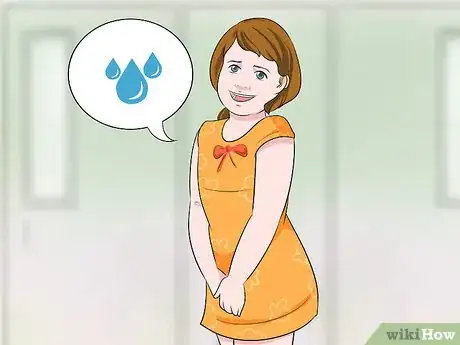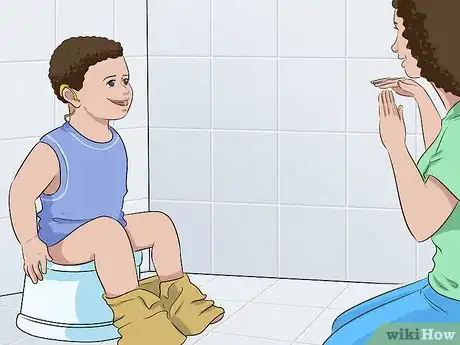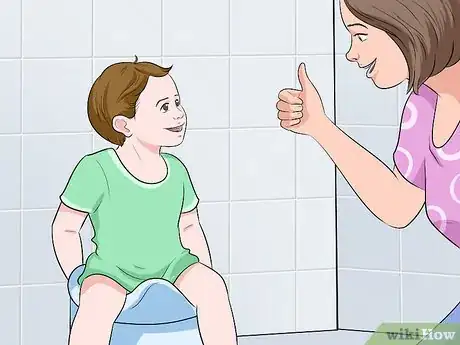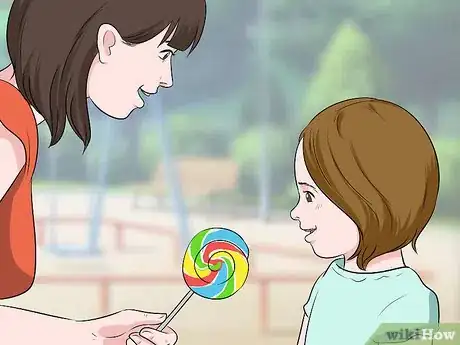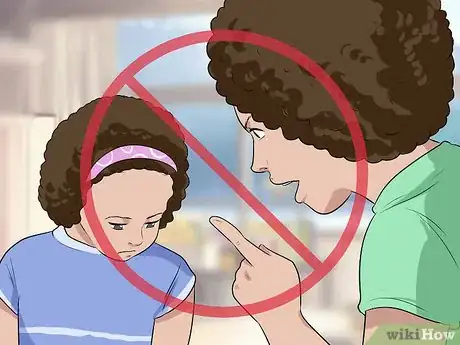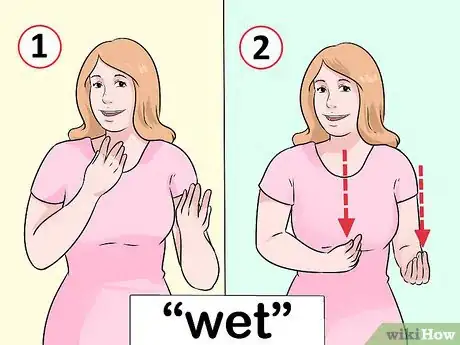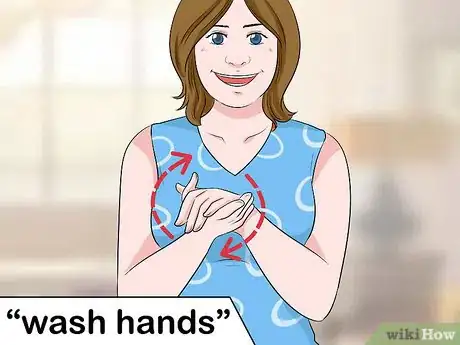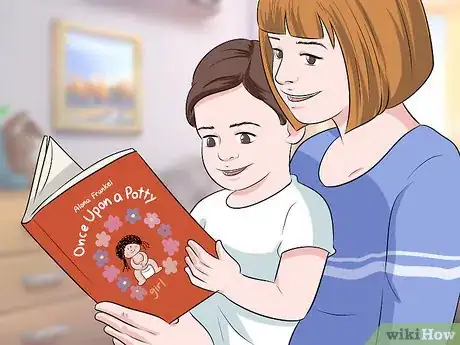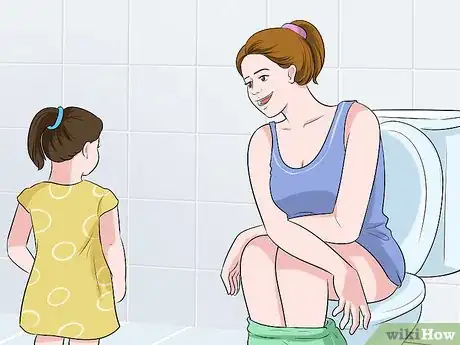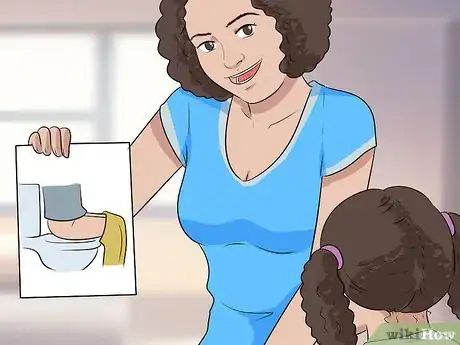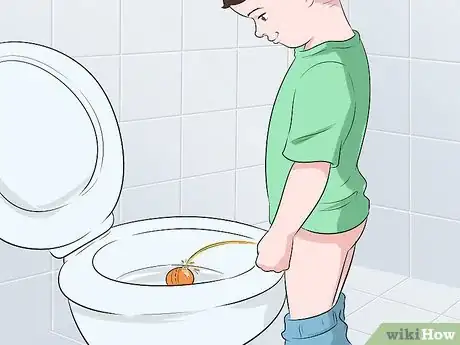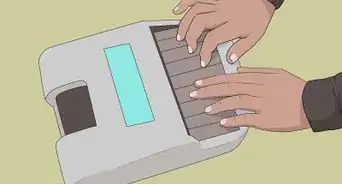This article was co-authored by Sylvia Rath. Sylvia Rath is a Parenting Specialist and the Director of Little Village Nursery School in Los Angeles, California. With over 30 years of experience, Sylvia guides parents through the preschool years and beyond by teaching respectful communication and positive discipline methods. Sylvia holds a BA in Psychology and Early Child Development from Antioch University. Before working at Little Village Nursery School, she taught preschool for eight years.
This article has been viewed 20,433 times.
Though potty training a deaf or hard of hearing child can seem extremely difficult, it is definitely achievable through making a few accommodations and tweaks to the traditional process. Once you detect signs that your child is ready to begin potty training, it is important to begin this process despite their disability. Through establishing basic potty training habits and utilizing language and visual aids, you can guide your child through this process.
Steps
Implementing Basic Potty Training Techniques
-
1Assess readiness. The first step in potty training your hard of hearing child or any child is to assess if they are ready to begin the process. If your child has begun to notice when they are wet or indicates to you that they need to potty, then they could be ready. Try to potty train them by age two or three, but do not feel discouraged if they do not catch on immediately.[1]
-
2Commit to the process. Once your child has indicated that they are ready to begin potty training, commit to it despite any setbacks. Your child is bound to have some accidents, but don’t let up. Though your child is hard of hearing, they are still able to learn skills just like any other child.[2]
- Determine what times your child is most regular and put them on the potty during those times. Don’t keep them there for more than 5-10 minutes.
Advertisement -
3Praise their effort. Though your child is not likely to be successful in the beginning, you should still praise them for any attempts they make. If they understand any sign language at this point, sign to them “good job.” If they have some hearing abilities, then you can verbalize your praise to them.[3]
-
4Reward them for a job well done. When your child does successfully use the potty, reward them so that they will have an incentive to continue the behavior. Give them a treat, a hug, or let them watch their favorite show for a bit.[4]
-
5Do not punish your child for mistakes. Understand that during these initial phases, your child will likely have several accidents. Though you may feel frustrated when these occur, do not lash out in anger or punish them. Communicate to them what they did wrong, clean up the mess, and move on.[5]
- Tell or sign to them “Alexandra, you are not supposed to potty in your bed. Now we have to go to the bathroom to clean you up. Only potty in the toilet.”
Using Language or Gestures to Potty Train
-
1Teach them signs for important potty language. Teach your child signs for words like “wet,” “dry,” “pee,” “poop,” or “need to go.” Use these signs each time you go to the restroom and when your child goes as well so they begin to understand their meaning. Sign “wet” when you change their diaper or “need to go” after lunch when they typically potty. Be consistent until they get the meaning of it.[6]
-
2Teach other potty hygiene signs. In addition to learning basic potty words, teach them other potty related terms as well. Terms like “wash hands” will be useful for your child to know and will help them establish an understanding of bathroom hygiene.[7]
-
3Accept any gesture as a sign. Though you may have taught them these signs for them to use to signify when they need to potty, realize that when they need to potty, their brain might override that sign and they might signal with another gesture. Accept any gesture and praise them for informing you, especially if they make it to the potty without having an accident. Allow your child to communicate with you in whatever way they can.[8]
-
4Purchase books. Another way to use language to communicate to your child via language is to use books. Read potty training books to your children and show them the pictures so they can better understand the concept of using the restroom properly. You might even try to find some videos or television shows to aid, as well. Some books you might purchase include:[9]
- Once Upon A Potty
- Everyone Poops
- I Want My Potty
Using Visual Aids to Potty Train
-
1Allow them to observe you pottying. Some children learn best by being shown what to do. Though you may not be able to communicate with your child verbally, you can communicate through action. Potty with your child in the room so they can understand the basic premise of the whole idea.[10]
- If you have another toddler or child in the home, let your child observe them pottying. This will help them understand the process more readily since they are closer in age and size.
-
2Use pictures. Though your child may not be able to hear you, they can often make sense of the world easily by using visuals. Create a chart, picture, or flash cards that depict the pottying process for your child. The first step might be for them to remove their underwear, then sit on the potty, then pee or poop, and then put on their clothes again and wash their hands.[11]
-
3Make a game of it. One way to help potty train your hard of hearing child is to make a game of the process. Put a ping pong ball or some other eye catching object that you don’t mind dirtying up in the toilet. Have your child aim at it by peeing on it. Though this exercise will work best for boys, some parents of girls might find it useful, as well.[12]
References
- ↑ http://cochlearimplantonline.com/site/potty-training-for-children-with-hearing-loss/
- ↑ http://cochlearimplantonline.com/site/potty-training-for-children-with-hearing-loss/
- ↑ http://cochlearimplantonline.com/site/potty-training-for-children-with-hearing-loss/
- ↑ https://www.healthychildren.org/English/ages-stages/toddler/toilet-training/Pages/Toilet-Training-Children-with-Special-Needs.aspx
- ↑ https://ssdfcs.ssdmo.org/sandbox/groups/ssdparenteducationdiversityawareness/wiki/51637/attachments/e4e0c/Toilet%20Training%20Strategies.pdf?sessionID=a80c73dbb3afe34e60432e31a19ca76cda01fc0e
- ↑ https://www.healthychildren.org/English/ages-stages/toddler/toilet-training/Pages/Toilet-Training-Children-with-Special-Needs.aspx
- ↑ http://www.parents.com/toddlers-preschoolers/potty-training/tips/potty-train-with-sign-language/?slideId=45019
- ↑ https://www.healthychildren.org/English/ages-stages/toddler/toilet-training/Pages/Toilet-Training-Children-with-Special-Needs.aspx
- ↑ http://cochlearimplantonline.com/site/potty-training-for-children-with-hearing-loss/
- ↑ https://www.healthychildren.org/English/ages-stages/toddler/toilet-training/Pages/Toilet-Training-Children-with-Special-Needs.aspx
- ↑ http://cochlearimplantonline.com/site/potty-training-for-children-with-hearing-loss/
- ↑ https://www.netmums.com/coffeehouse/advice-support-40/special-needs-disabilities-support-502/368090-toilet-training-hearing-loss-all.html
